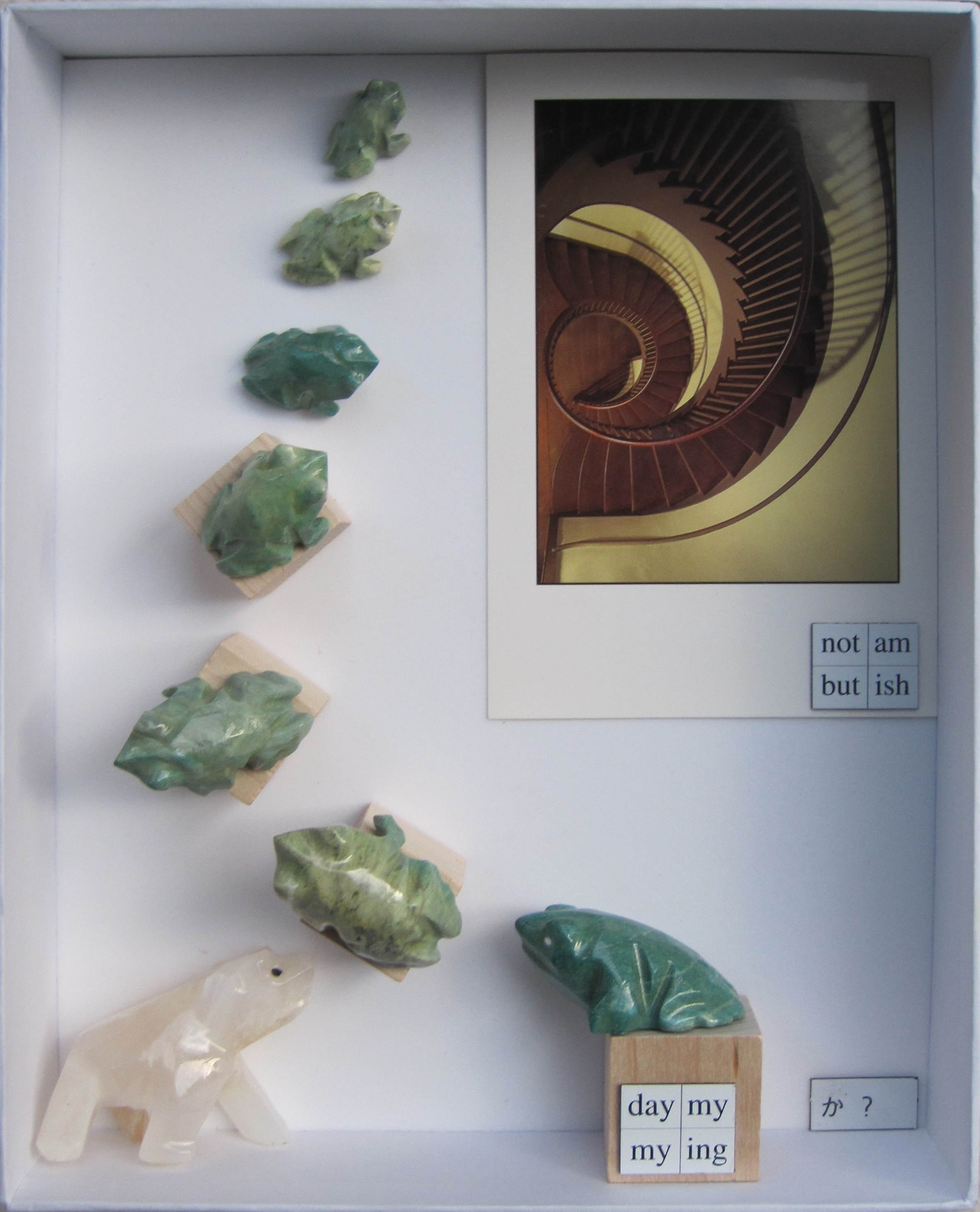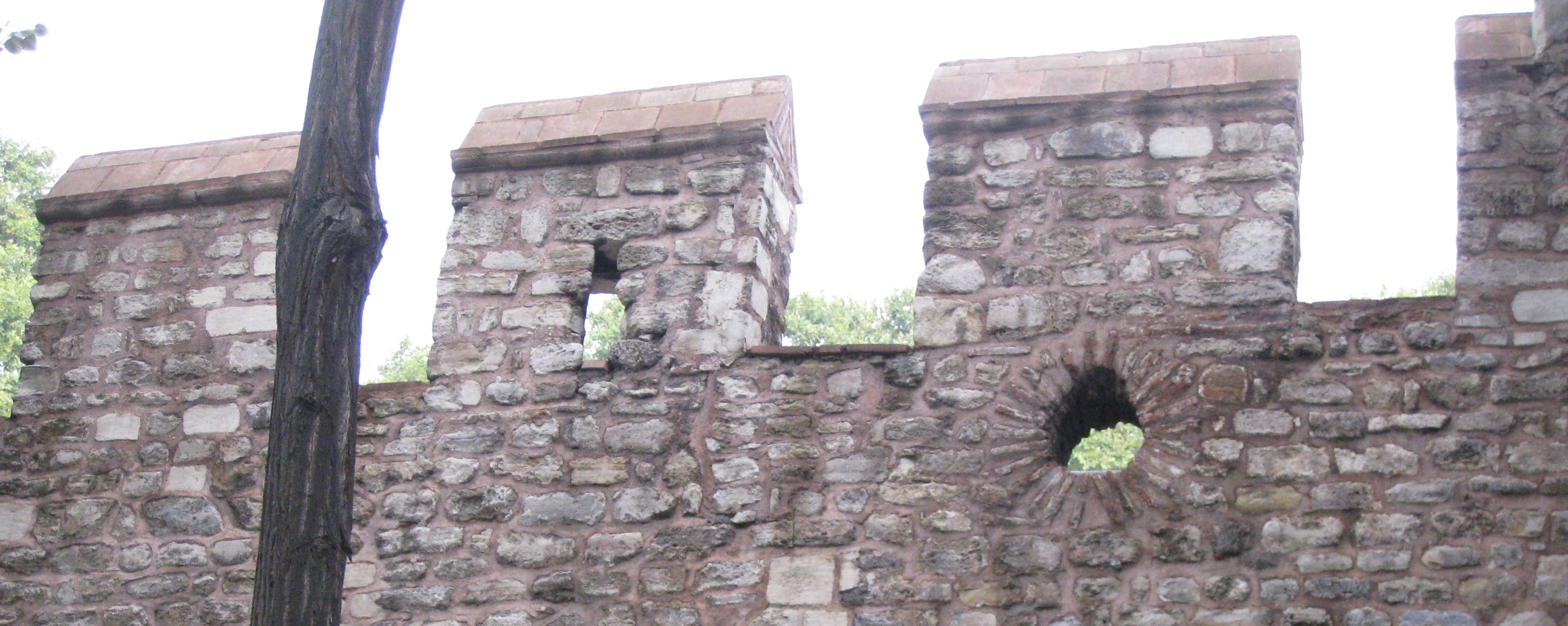Interventions in Existing Homes
Would there be ways of adapting Arakawa and Gins's architectural procedures to already existing houses or apartments? If the creation of an architectural surround with their necessary qualities always demands completely new construction, this limits their possible impact and puts their ideas at the mercy of too many external forces and institutions and funding sources. Could some of the qualities of their new constructions be inserted into already built environments? (1)
Imagine, for instance, rugs that have patterns and bumps that would accomplish some of the disorientation and reorientation found in their more three-dimensional creations.
Imagine color patterns and textures on walls and floors and ceiling, perhaps duplicating some of the effects from the Bioscleave House where color and texture rotate about from room to room.
Imagine furniture that refuses to sit quietly in the background, or that forces walking routes through a suburban living room to twist or use ramps.
Imagine mirrors and colors and inserted curtains reconfiguring spaces that cannot be rebuilt, so horizons and landing sites become problematical even in rooms that remain rectangular and flat-floored.

Multiple Horizons, by David Kolb
Imagine a "kit" that allows you to add a room to your house as you would add on a sunporch, but this room is like one of the rooms at the Bioscleave House.
Besides providing income for larger projects, such add-ons could echo the effects of Arakawa and Gins' total new constructions. People might learn and change. New social norms might develop.
How might such a partial intervention do its work? We can refer to the Mechanism of Meaning series of panels, since these were not total architectural surrounds but were pieces of art that tried to escape their status as isolated works hanging on the wall.
Panel 7.3 of the Mechanism of Meaning (2) states that "a line is a crack." That is the hope that the kind of interventions and additions I am suggesting would embody. That they would crack open the familiar environment, the habituated architectural surround. A line in the rug, or the edge of a mirror or a color boundary might function as a disorienting and ambiguous crack, both in the invisible line isolating art works and in the fabric of daily life.
Panel 3.1 states that "everything is ambiguous as well as the judgment that something is ambiguous. As soon as any fact is presented, ambiguity appears as the zone of alternate possibilities." Phenomenology from Husserl (3) to today has insisted that for anything to be presented as meaningful if must appear against a "horizon" of related possibilities. The pen on the desk is meaningful because there are possible uses of the pen which are present in our habitual taking up the pen as part of a familiar world. We could read panel 3.1 as reminding us of this fact.
However, the point the panel is making is stronger. For besides the habitual set of possible uses for the pen there are wilder, stranger uses and non-uses and challenges that crack open the whole familiar scheme of writing and using writing instruments. And there is no sharp division between the customary and the wilder possibilities.
Arakawa and Gins are trying to force us to be more self-conscious and precise about locating and moving our body in a space which has cracked open and become ambiguous. The "horizon" metaphor from phenomenology becomes perversely appropriate when their architectural surrounds refuse to offer a single unambiguous perceptual horizon for orienting bodily and movement.
Could such partial interventions accomplish anything of what Arakawa and Gins are hoping to accomplish in their total constructions? Partial interventions in existing spaces would not have a total effect, but they might piece together a challenge that plays against the ordinary habits of using a room and its furniture, suggesting new ways of holding one's body and organizing perceptual landing sites.
The problem of making an intervention into an ordinary room returns us to the problem of escaping the museum. In order to succeed such interventions would have to be more than artworks hanging quietly on the wall or lying demurely on the floor. They would have to crack open the subtle borders that frame an artwork as different from ordinary life. The resident in the house or apartment would have to avoid taking up an attitude of contemplative distance. One way to force this would to be intrusive, something you could trip over, something you can't avoid looking at, something you have to detour around or sit awkwardly on or readjust your body to pass by.
Suggesting such interventions must seem pallid reformism instead of the total revolution that Arakawa and Gins propose. Yet if an uncompromising demand for total rebuilding and new construction makes their only alternatives "total rebuilding or nothing," the powers that be and the economy that is will almost surely decide for "nothing."
On the other hand, there is the danger that if they were multiplied and sold as products, such interventions might get commodified into a "style" subject to fads rather than an attempt to change bodies and lives. Is there an escape from that trap?
